Catalogue > List by artist
Browse the entire list of Rencontre Internationales artists since 2004. Use the alphabetical filter to refine your search. update in progress
Eddie D
Catalogue : 2006Sonatina | Experimental video | dv | color | 2:5 | Netherlands | 2004
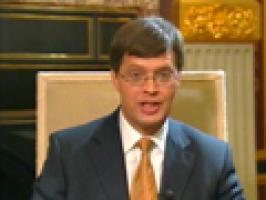
Eddie D
Sonatina
Experimental video | dv | color | 2:5 | Netherlands | 2004
Frederic D
Catalogue : 2007Miss baghdad | Fiction | dv | color | 77:0 | Germany | 2005
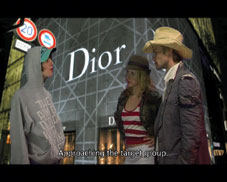
Frederic D
Miss baghdad
Fiction | dv | color | 77:0 | Germany | 2005
Images from Iraq motivate a girl to protest against the war. But Berlin's lifestyle of film sets and glossy advertising images cover any meaningful effort. The disillusions start to make her physically sick. Her hopes return when she meets a renowned advertising guru that turns her into the star of a worldwide peace-show. Yet, again, all she gets is a hollow spectacle, designed to entertain and reassure. Together with another disappointed girl she decides to take radical measures.
Frederic D. was born 14.02.1974 in Hamburg. He studied film and theatre from 1996 to 1998, and was director for MTV Networks London from 1998 to 2001. He did various video clips for Jamie Lidell, Soffy O, Terranova, Mocky, Mia, etc. From 2003 to 2006, he prepared and shot the movie "Miss Baghdad". In 2005 he participated in the WARDISCO exhibition, Brunnen 13, Berlin.
Eddie D
Catalogue : 2008Pas de deux | Experimental video | dv | color | 1:55 | Netherlands | 2007
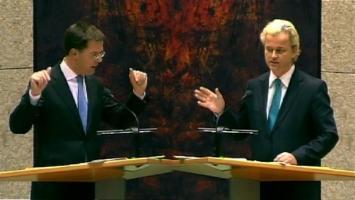
Eddie D
Pas de deux
Experimental video | dv | color | 1:55 | Netherlands | 2007
Pas de Deux (directors cut) 2007 Pas de Deux is a choreography for two Dutch right-wing politicians, or better, for their hands. The two are from different parties, one moderately right wing, the other more populist. They are trying to appeal to the same voters, the nationalistic islamophobics, without sounding too extreme. And of course, like all politicians, without really saying anything. The work is edited on rhythm and hand movements with a selection of words taken from the raw footage (a parliament discussion about people having two nationalities and two passports).
eddie d (1963-2049) graduated at AKI Videoartdepartment in 1991. His work consists of photos, videotapes and video/computer installations. Themes are deconstruction of language, rhythm and the relation between image and sound. His videotapes are musical compositions in which he uses his very exact editing technique to build rhythmical structures with repetition as a striking element. Music is a basic influence; as a formal starting point as well as a source of structures and patterns. His work is internationally considered the standard in this genre of video art. He uses found footage combined with self-shot video and animated photos. Working with language (as seen in his videopoems) has evolved into the de-construction of words and sounds. This transforms into compositing sounds from single letters, that would be almost unpronounceable. He is also further exploring the concept of still live in video/computer installation. These still lives have their roots in movie scenes and a photo archive that he build over the past 15 years. The photos, made during his travels, show a search for the exceptional in the ordinary; table-lamps, furniture and household wares are favorite subjects. Mr d did also several `live music` projects were he worked together with composers to create works in which video and sound are tightly integrated in the work. He wants to prevent the one from being illustrative to the other and make the video an extra musician on stage. Mr d also occasionally presents "the eddie d lecture", where he talks about his influences and shows favorite film and tv fragments, cartoons and music clips that relate to his own work. He tries to make the lecture he himself would want to see, which means less talk and more image and sound.
Catalogue : 2007Nice and fresh and greasy | Experimental video | dv | color | 4:50 | Netherlands | 2006
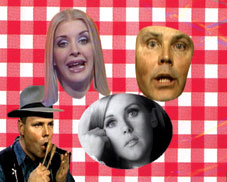
Eddie D
Nice and fresh and greasy
Experimental video | dv | color | 4:50 | Netherlands | 2006
"Nice and Fresh and Greasy" is a video-opera about beauty, commercialism, and the freshness of grease (or the greasiness of fresh). It is a musical video-collage in which found footage elements and music are tightly integrated to form a dynamic, uplifting composition. With this work, Eddie D again shows that he is the master of rhythmical video. He worked in collaboration with Dutch composer Jaap Dercksen, and the music is composed in conjunction with Eddie D's video-editing process. After selecting and pre-editing some video and sound, Eddie D sent his work to Jaap the composer, who then wrote a ground layer of music. He then sent the score to Eddie D who edited more video and again sent his work to Jaap, and so on and so forth, until the piece was ready. The images are from tell-sell TV and a 1960's television commercial. All this is rhythmically accompanied by a man who plays the spoons and likes to use his mouth as a musical instrument. The work shows that, when you have guests, a nice tablecloth is always appropriate.
Eddie D's work consists of photos, videotapes and video/computer installations. His themes include deconstruction of language, rhythm, and the relation between image and sound. His videotapes are musical compositions in which he uses his nearly perfect editing technique to build rhythmical structures with repetition as a striking element. Music is a basic influence - as a formal starting point as well as a source of structures and patterns. His work is internationally considered the standard in this genre of video art. He uses found footage combined with self-shot video and animated photos, and mixes layers of cut-out images in a collage-like technique that combines video and animation.
Felice D'agostino, Felice D'AGOSTINO
Catalogue : 2015In attesa dell'avvento | Experimental doc. | hdv | color and b&w | 22:20 | Italy | 2011
Felice D'agostino, Felice D'AGOSTINO
In attesa dell'avvento
Experimental doc. | hdv | color and b&w | 22:20 | Italy | 2011
1861 - 1971 – 2011. Dates, but also firm props of the official rhetoric that formulates and reformulates the interpretation of actual history. 1861’s celebrations of Italian Unification see us now in this tough 2011, disclosing a strong emphasis that clashes against the unresolved Italian past. Playing with the banality of historical dates, the film wedges a third date Reggio Calabria’s 1971 revolt. Unsettling shadows coming back to disturb the order with which politicians wish to govern the present crisis.
Arturo Lavorato, born in 1974, and Felice d’Agostino, born in 1978, are film directors, directors of photography and editors. They co-directed all of their work in their home region, Calabria. Their films have been shown in many festivals (Cinéma du réel 2005 and 2006) and won awards around the world, including the Orrizonti prize at the 68th Mostra de Venezia and Best documentary at the Torino Film Festival in 2005.
Kurt D'haeseleer
Catalogue : 2008Rock | Experimental video | dv | color | 7:6 | Belgium | 2007

Kurt D'haeseleer
Rock
Experimental video | dv | color | 7:6 | Belgium | 2007
Rock BE, 2007, 7`02? Underneath a water surface or in an underwater world, we can see people floating. They could be a concert audience; listeners to music by TUK perhaps, for which Rock serves as a music video. But they are lying still, floating, beyond their earthly existence. Mesmerizing noise accompanies them through a channel of a pixel-infected nature that swallows them up and spits them out in a parallel universe where an artificial landscape of rocks and stones unfolds along a sea. In the worlds of Rock, it is impossible to distinguish digital from analogue, virtual from real, natural from artificial.
Kurt D'haeseleer
Catalogue : 2006Fossilization | Experimental video | s-vhs | color and b&w | 9:1 | Belgium | 2005
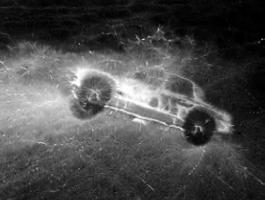
Kurt D'haeseleer
Fossilization
Experimental video | s-vhs | color and b&w | 9:1 | Belgium | 2005
"For fossilization, d`Haeseleer used video as a kneading machine. Layers of images are moulded into a stickymess that absorbs and attractys everything it touches. It`s an apocalyptic endgame, starring several cars and some human remains and maybe even some wishful thinking on a moody. Rainy day."
Kurt D`HAESELEER was born in 1974 in Anderlech. He studied Audiovisual Arts at the Hogeschool Sint-Lukas in Brussels and Modern History in Leuven and in Vienna. Since 2001 he has been a member of the artist collective De Filmfabriek with realisation of several projects, for example live performances together with Tuk (aka Guillaume Graux) in the Beurrschouwburg in Brussels or the World Wide Video Festival Amsterdam.
Catalogue : 2006_imovie_ [2] In between/shifting | Experimental video | dv | color | 13:52 | Belgium | 2004
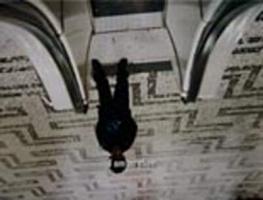
Els Opsomer
_imovie_ [2] In between/shifting
Experimental video | dv | color | 13:52 | Belgium | 2004
_Imovie_[2] in-between/ shifting is the second video Opsomer made with the amateur software package ?iLife?, supplied with Apple computers. The video consists of photography of cities in Brazil and Senegal, which Opsomer visited. The photos of views from and onto high-rise buildings were later transferred to video in such a way that the urban structures appear to have been filmed right there on the spot. Nothing but the unnatural halted appearance of these images indicates we are in fact dealing with photography. During the film subtitles appear onscreen, constituting a video letter. The letter contains an investigation into the assimilation of Opsomer?s personal ambivalent impressions during her stays in the various cities.
ELS OPSOMER, *1968, lives and works in Brussels. She is a visual artist and graphic designer and for a couple of years she was an artist-in-residence at the Rijksacademie in Amsterdam. In collaboration with people like Johan Grimonprez, Herman Asselberghs and Ronny Vissers she realized a couple of multimedia installations. She draws from her constantly growing archive of urban images, puts together a commentary on and reinterpretations of global reality and at the same time she questions the contrast with the safekeeping of personal integrity in this reality.
Josef Dabernig
Catalogue : 2015River Plate | Experimental film | 35mm | black and white | 16:0 | Austria, Italy | 2013

Josef Dabernig
River Plate
Experimental film | 35mm | black and white | 16:0 | Austria, Italy | 2013
River Plate displays a micro society in a fragmented body-narration. Knees, shoulders, feet and bellies are signifiers of articulated human presence, revealing nothing else against a claustrophobic background of cement, stone and water.
Born 1956 in Kötschach-Mauthen, Austria. Visual artist, studied sculpture at the Academy of fine Aers, Vienna. Short films since 1994. Lives in Vienna Exhibitions include among others the 9. Gwangju Biennial (2012), the Venice Biennials (2003, 2001) and Manifesta 3, Ljubljana (2000). Film Festival participations at Locarno International Film Festival (2008, 2002), London Film Festival (2009), Mar del Plata International Film Festival (2011, 2007), Melbourne International Film Festival (2001), International Short Film Festival Oberhausen (2009, 2006), International Film Festival Rotterdam (2011, 2000), Toronto International Film Festival (2009, 2006) and Venice Film Festival (2011), where his short film Hypercrises has been nominated for the European Film Academy Award Monographs have been published by Kerber PhotoArt (2013), JRP|Ringier, Zurich (2008) and Verlag der Buchhandlung Walther König (2005).
Dagmar Dachauer
Catalogue : 2019Competing for Sunlight: Ash | Video | 4k | color | 4:43 | Austria | 2017
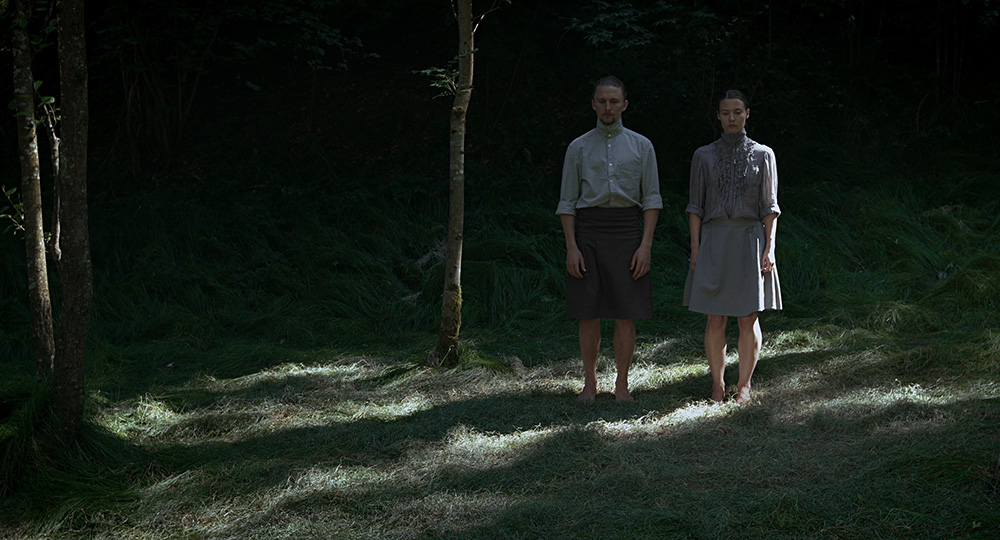
Dagmar Dachauer
Competing for Sunlight: Ash
Video | 4k | color | 4:43 | Austria | 2017
`Competing for Sunlight` is a Short Dance Film Series, featuring protagonists of a range of different tree species and Dance, telling individual short stories. “The death of a species, especially a species as significant as the Ash, punches a hole not only in nature, but also in our culture”. - George Monbiot Starting in the early nineties in Eastern Europe, an Asian fungus has gradually conquered the European continent, infecting almost all ash trees. The symptoms are very severe, many cases leading to the death of most trees. As aresult, it is assumed that the ash tree in Europe will soon be close to extinct. Choreographer and dancer Dagmar Dachauer was inspired by the sad faith of the European ash tree, and linked it to personal loss in her own life. Finis est cinis: Ash is what remains. Ash is a eulogy for the ash tree and for Prasthan Dachauer, who passed away in 2016.
Dagmar Dachauer is a dancer, choreographer and filmmaker born in Linz, based in Brussels. She grew up in a lonely house in the Upper Austrian forest, a place that continuously inspires her work. She has studied Dance at Amsterdamse Hogeschool voor de Kunsten as well as at P.A.R.T.S. in Brussels. She founded the Austrian art association UMFUG, in which she realizes dance and theatre performances as well as film projects with collaborators coming from various backgrounds such as Ecology, Cinema, Theatre, Music and Sound Design. Her solo works about the Viennese Waltz (“Wunderbare Jahre” and “Wie soll ich das erklären”), as well as her dance films have received several awards and are touring internationally.
Don Hai Phú Daedalus
Catalogue : 2022Celilo Falls in Quarantine | Experimental doc. | 4k | color | 10:0 | USA | 2021
Don Hai Phú Daedalus
Celilo Falls in Quarantine
Experimental doc. | 4k | color | 10:0 | USA | 2021
Celilo Falls is the oldest continuously inhabited community in North America, the site of a traditional fishery on the Columbia River. For 15,000 years, the cascading waters sustained the lives of many indigenous tribes. In 1957, the completion of the Dalles Dam–a massive hydroelectric generator–inundated the falls, displaced most of the families that subsisted at the site and obstructed the migrating salmon, white sturgeon and other anadromous fish. Today, only a few families reside at what is now a man-made lake. Shot from Horsethief Butte, an outcropping of basalt, we see the petroglyphs and pictographs created by indigenous people who once came here, communing here above the tumbling waters. An ethnographer records the spoken language–Chinookan–of the community just five years before they were displaced. The butte was carved out by the glacial activity of the last ice age, and stands in defiance to the signature winds wailing up the Columbia Gorge. This is a vignette of Celilo Falls during the 2020, SARS-COV-2 pandemic.
Don H?i Phú Daedalus (b. 1983) grew up in the shadow of the country's largest public observatory—an area so remote and sparsely populated that it served as the first plutonium-processing plant for the Manhattan Project. Shortly after the oldest human remains in North America were discovered near his hometown, Daedalus left to attend the University of Washington, where, coincidentally, the remains were to be held during the decade-long legal dispute between the Kennewick tribe and anthropologists. He lives and works in New York.
Tobias Daemgen
Catalogue : 2008Duschszenarium | Experimental video | dv | color | 1:44 | Germany | 2007
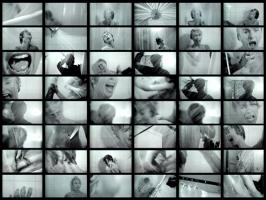
Tobias Daemgen
Duschszenarium
Experimental video | dv | color | 1:44 | Germany | 2007
In der Videoarbeit "Duschszenarium" wird die lineare, filmische Abfolge der Einstellungen der Duschszene aus dem Film "Psycho" von Alfred Hitchcok durch das Element der Gleichzeitigkeit erweitert. Die ursprüngliche Struktur der aufeinanderfolgenden Schnitte wird aufgebrochen und ein Blick in die Mechanik der Szene wird geöffnet. Jede der Einstellungen behält ihre zeitliche Position innerhalb des Erzählstrangs aber bleibt nach ihrem Einsatz für die restliche Dauer des Clips als Loop erhalten. Durch die serielle, gleichzeitige Anordnung der Einstellungen bleibt es sowohl möglich dem Verlauf der Szene zu folgen als auch etwas über das Verhältnis und die Zeitlichkeit der Schnitte und Einstellungen zueinander im direkten Vergleich zu erfahren.
Tobias Daemgen, geboren 12.07.1980 in Braunschweig, 2001 bis 2008 Studium an der Fachhochschule Düsseldorf. Lebt und arbeitet in Düsseldorf.
Emanuele Dainotti
Catalogue : 2021Prossimo | Experimental video | mp4 | black and white | 4:20 | Italy, Belgium | 2020
Emanuele Dainotti
Prossimo
Experimental video | mp4 | black and white | 4:20 | Italy, Belgium | 2020
May 2020, Limburg (Belgium). A peasant family is vaccinating their animals.
Emanuele Dainotti (b. 1987 in Milano, Italy. Lives and works in Antwerpen, Belgium) is an artist and filmmaker. Recent exhibitions include: Museum of the Moving Image (USA); Louvre Museum (France); Reykjavík International Film Festival (Iceland); Rencontres Internationales Paris (France); Museu de Arte Moderna do Rio de Janeiro (Brazil); CGAI (Spain); Hudson Valley MOCA (USA); Museu Nacional de Arte Contemporânea (Portugal); Festival Miden (Greece); FIVAC (Cuba). In 2018 he won the “International Competition for the Intermedia Artwork” organized by the Academy of Fine Arts in Kraków, The Faculty of Intermedia and the Foundation for Development of Intermedia Artwork. In 2019 a jury presided by Anish Kapoor and Anda Rottenberg awarded him with the “Now You See Me award” at Louvre Museum in Paris. In 2020 he is among the artists of Loops Expanded, an international network, dedicated to exhibiting and researching the concept and the form of the Loop.
Catherine Dalfin
Catalogue : 2011L'âge du Bronze | Experimental doc. | dv | color | 6:20 | France | 2009
Catherine Dalfin
L'âge du Bronze
Experimental doc. | dv | color | 6:20 | France | 2009
Sur une petite île au large de la Baltique, une idylle douce-amère entre l?homme qui tente de se faire une place et la nature qui n`en a cure.
"Dans le désordre, Catherine Dalfin a fait des études de lettres et d'histoire de l'art, s'est glissée à la radio pendant un certain temps, a croisé la route d'un collectif d'artistes, a été critique d'art pensant que ça valait la peine, a cru pouvoir participer à la création d'une revue et a finalement persévéré dans la vie après avoir touché une caméra." (Catherine Dalfin, juin 2009).
Charlotte Dalia
Catalogue : 2026Speechloss | Experimental film | 4K | color | 15:0 | France | 2023

Charlotte Dalia
Speechloss
Experimental film | 4K | color | 15:0 | France | 2023
SPEECHLOSS is a film inhabited by isolated characters, out of sync and searching for direction. In an eerie seaside atmosphere, we come across a jogger, a bodybuilder, dogs and a strange giant organ. Speechloss is a progression of four scenes in which both the wind and a powerful desire to feel alive blow. For each of them is an abandoned AI, waiting to be activated.
Charlotte Dalia was born in 1993. She graduated from the Institut Supérieur des Arts de Toulouse. A visual artist, video maker and film director, her research focuses on both the formal and narrative effects of cinema. Steeped in the principle of the “cinémonde” theorised by Jean-Luc Nancy, she uses cinema as a repertoire of signs that “opens the inside onto itself.” She has taken part in numerous group exhibitions and has been invited to produce two solo shows. Continuing her investigations into the writings of reality through the forms of fiction, she trained in documentary writing with Ty Films and Films en Bretagne. She is currently developing ALMERICA, a project combining climate crisis and film sets, as well as writing a medium-length film following on from SPEECHLOSS, in order to pursue and expand its universe.
Walwin Dan
Catalogue : 2012Second Unit | Experimental video | hdcam | color | 9:0 | Netherlands, United Kingdom | 2010
Walwin Dan
Second Unit
Experimental video | hdcam | color | 9:0 | Netherlands, United Kingdom | 2010
The title refers both to a fictional unit of soldiers and their role in detaining the men standing on the stones in the field, and also to the role of a team in commercial film production to the role of shooting material without the requirement of the main cast and crew. The presence of the camera in observing events, and the characters awareness of it, in front of and behind the camera, lends the video a functional aesthetic that suggests it is made for tactical or intelligence purposes, but is made complicated by the soundtrack, where all the extraneous sounds of the surroundings are audible apart from the dialogue, which further obscures its reading.
Dan Walwin studied Fine Art at Goldsmiths College, London, and begins a residency at the Rijksakademie van Beeldende Kunsten, Amsterdam in 2012. Recent presentations include European Media Art Festival, Osnabruck in 2011, Rencontres Internationales in 2010/11 and Festarte Video Art Festival (Museum of Contemporary Art, Rome) in 2010. A solo exhibition of his, tele-, begins in November 2011 at ZAAL5, Filmhuis Den Haag, Netherlands. More information can be found at www.danwalwin.co.uk
Catalogue : 2011Water is a burned body | Video | dv | color | 11:45 | Netherlands, United Kingdom | 2009
Walwin Dan
Water is a burned body
Video | dv | color | 11:45 | Netherlands, United Kingdom | 2009
Water is a burned body is an attempt to evoke a dystopia by economic means. A couple wake to find a boat colliding with wall of the flooded house they are in. The man goes to investigate, only to find the body of a woman, which he discards into the water. They set off in the boat into the open water, coming across an obstruction that puts an end to their attempts.
Dan Walwin is an artist working primarily in video, having studied Fine Art at Goldsmiths College, London, graduating in 2007. Recent shows include For the sake of the image at Jerwood Space, London, 2010, Verena Klary, Iwan van`t Spijker, Dan Walwin at Walden Affairs, The Hague, 2009, and Nature Untouched at Tou Vindu, Stavanger, 2007.
Levy Dana
Catalogue : 2016Eden Without Eve | Documentary | hdv | color | 5:2 | Israel, USA | 2014
Levy Dana
Eden Without Eve
Documentary | hdv | color | 5:2 | Israel, USA | 2014
A short documentary about life in the Everglades National Park’s with it’s few residents. Living in the midst of a national park, they learn to exist with the the wild. As a woman filmmaker I observe these men almost like an anthropologist, observing how they interact with their surroundings. The only women that appear in the film are as still images in Lucky`s photographs, . He believes that women like having themselves put in a romantic, exotic, dangerous setting to be photographed.
Dana Levy was born in Tel Aviv and Lives and works in New York. She completed her Post graduate in Electronic Imaging at the Duncan of Jordanston College of Art Dundee University, Scotland, and holds a BA from Camberwell Art College London Awards include 2013 Beatrice Kolliner Young Artist Award from the Israel Museum, 2010 Dumbo Arts Festival best studio award, 2008 Young Israeli Artist Award, 2006 Hamburg Short Film festival jury award. Solo shows include at The Israel Museum, CCA Tel Aviv, Nicelle Beauchene Gallery New York . Her work has been screened at Tate London, Tribeca Film Festival,Oberhausen Film Festival and more. group shows include at the Biennial of Contemporary Art of Cartagena 2013, Bass Museum, Miami, Florida, Invisible Exports Gallery NYC , MOCA Cleveland, EVA International Bienniel , Israel Museum Jerusalem, Harn Museum of Art ,OK Contemporary Art, Linz Au and more Artist Residencies include AIRIE Everglades National Park, Wave Hill Workspace residency New, LMCC Workspace NYC, Le Havre/ New York. Regards croisés Art Omi NY, I-park, Connecticut, Triangle Arts Association NY and more
Daniel & Clara
Catalogue : 2020Notes from a Journey | Experimental fiction | hdv | color | 72:30 | United Kingdom | 2019
Daniel & Clara
Notes from a Journey
Experimental fiction | hdv | color | 72:30 | United Kingdom | 2019
"Notes From A Journey" uses images and sound captured whilst on a journey through the British landscape as the material for an exploration of the acts of looking/seeing listening/hearing. More than simply mapping a journey across the country, this film presents a map of the filmmakers' engagement with the images of the landscape. By reducing them to impressions, fragments, fictions and forms, the recorded images/sounds are transformed into “artefacts” which, when presented in the sequence of a film, activate narratives, ideas and sensations in the viewer. Central to the film are scenes shot at the Neolithic mound and stone circle of Avebury, motifs that speak of the long and complex relationship humans have to their environment and how through art and ritual we seek to understand our place in relation to it. Ultimately this film is a journey in itself – a first person encounter with the limits of perception, it exists in a place where both the recording device and the human senses are tested.
Daniel & Clara, two humans one artist on a journey of exploration of dimensions real and imagined, the results of which consist of moving image, photography and performance. In their current work they have been exploring the British landscape as a site for encounters with the mysterious, the eerie, the otherworldly and the unknown. As they say, “we seek to see with one eye open and one eye closed, sight turned simultaneously out towards the world and inward to the depths of the human experience.” In their work, images and sounds of the landscape become activators of narratives where past, present and the imagination intermingle. Their work has been exhibited and screened internationally at galleries and film festivals including Whitechapel Gallery, Kettle’s Yard, Fabrica Gallery, Close-up Cinema, BFI, Alchemy Film & Moving Image Festival, Doclisboa, Microcinema Artist Moving Image, Museu de Arte Moderna Rio de Janeiro, Black Box Farnham, Film Mutations Zagreb. In 2019 they launched Moving Image Artists (MIA), an organisation dedicated to supporting and cultivating contemporary moving image art and experimental film. This includes an online magazine, screenings and the Moving Image Salon, a monthly gathering for artists to meet, share and discuss their work. The Moving Image Salon takes place at Film and Video Umbrella, London. Several of their films are distributed online by Tao Films and Kinoscope. Films by Daniel & Clara are also included in the BFI National Archive.
Jérémie Danon
Catalogue : 2021Plein Air | Experimental doc. | hdv | color | 26:30 | France | 2020
Jérémie Danon
Plein Air
Experimental doc. | hdv | color | 26:30 | France | 2020
Surrounded by landscapes extracted from video games, people in rehabilitation testify. In front of the camera, they talk about their hopes, doubts and difficulties since leaving prison.
Ariani Darmawan
Catalogue : 2007A City of Desire | Fiction | dv | color | 4:0 | Indonesia | 2006

Ariani Darmawan
A City of Desire
Fiction | dv | color | 4:0 | Indonesia | 2006
An interpretation of Italo Calvino's Zobeide: a tale of a city where the inhabitants constantly build their places upon their dreams... which never come true. Calvino names it 'an ugly city', we call it 'a reality'.
Ariani Darmawan is a video artist/filmmaker who lives and works in Bandung, Indonesia. She studied Fine Arts at the School of the Art Institute of Chicago after finishing her bachelor degree in Architecture at the Parahyangan Catholic University in her hometown. Most of her works comment on power/identity and language along with its construction of meanings, where she constantly erases and re-draws the lines of actuality. Ariani has participated in numerous film festivals and art exhibitions in North America, Europe, Australia, and Asia. She recently finished her short film called "The Anniversaries" after receiving a special mention at the Jakarta International Film Festival Script Competition.
Kenan Darwich
Catalogue : 2006Do the Bambi | Animation | dv | color | 2:15 | Syria, Germany | 2005

Kenan Darwich
Do the Bambi
Animation | dv | color | 2:15 | Syria, Germany | 2005
"Do the Bambi" est une vidéo musicale expérimentale sur la chanson du groupe Stereo Total. Le film se compose de 2000 images individuelles, dessinées à la main, et relie ainsi des ambiances au visuel poétisé en se basant sur une ancienne technique de dessin animé et en utilisant les nouveaux médias.
Kenan Darwich est né en 1982 à Damas, Syrie. Il vit depuis 2001 à Hambourg. En 2003 il commence ses études à la Kunsthochschule de Kiel, section design de la communication.
Bhaskar Jyoti Das, Waribam Dorendra
Catalogue : 2020I Don't Want to Be Born Again for Poem | Experimental doc. | hdv | color | 22:0 | India | 2019
Bhaskar Jyoti Das, Waribam Dorendra
I Don't Want to Be Born Again for Poem
Experimental doc. | hdv | color | 22:0 | India | 2019
During 1970’s and 80’s there were many revolutionary uprising happening, near and far, all around the world. In this period, amidst this protest and revolutionary uprising, a poet symbolically expresses his feelings to capture the complexity of human existence. Constant financial pressure in his family life is also evident in his words. At one point, words become distorted and absurd. One evening, the poet, Abani Chakravarty disappears and left many confusions.
we are two Directors 1. Bhaskar Jyoti Das, I am currently based in Assam. I’m an independent film maker and Screenplay writer. Recently two of my scripted feature films got Best film award, one, in Los Angeles Indian Film Festivals 2017, “SONAR BORON PAKHI”, another in MAMI 2016, india,”HANDUK” and National Film Award 2016. Last 10 yrs I worked for 3 UCLA projects under a professor from University of California, LA, USA. 2. Waribam Dorendra, studied basic film making in his native state of Assam in India. He explored film making process for some years with a mini DV camera. He has edited few short and long, video and documentaries of his fellow native filmmakers. He has worked with a new media group called Desire Machine Collective from 2007 till 2010 on a project called "periferry" in Guwahati city. He has made many short and long videos and documentaries since the year 2007. He finds cinema as a tool to reflect upon life as well as playful desire.
Adheep Das
Catalogue : 2025Half-Portrait of Dadu | Experimental film | hdv | color | 5:15 | India | 2023
Adheep Das
Half-Portrait of Dadu
Experimental film | hdv | color | 5:15 | India | 2023
Like many people in their later years, my grandfather had a set of oft-repeated stories. Towards the last few months of his life, a brand new person,'Chetan' started populating his life. This poem-film is an attempt to understand the feeling.
Adheep Das likes mixing various mediums and finding out what comes of them. Fascinated by science and arts alike, his interests take him to places that merge the two. As part of a 3 person collective, he got the ThinkArts Grant for Children in 2022. 'Moonless', a film he directed and animated, has competed at DokLeipzig and Dharamshala Intl. Film Festival, amongst others. His documentary 'Khaalti Kaay Varti Kaay' competed at IDSSFK, Kerala. Some of his work has also been exhibited as part of the Kochi-Muziris Students' Biennale and the Wrong Biennale. He has worked on a live shadow puppetry production called ‘Zig Zags to Earth’, and has performed at venues such as Max Muller Bhawan, Delhi, and Kiran Nadar Museum of Arts, Delhi. He has also been part of the Serendipity Arts Foundation Residency 2024.